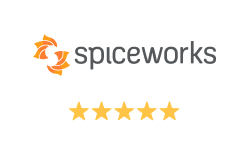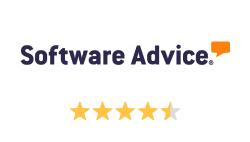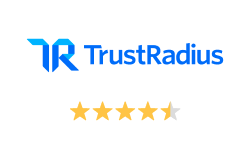If there have been two clear effects to come out of the last five years of information security, it’s that costs have gone up rapidly, and the budgets have not, or at least not anywhere near a commensurate rate. Businesses everywhere are struggling with how to do more with less. These pressures are being felt most acutely in threat detection and response, as well as in the never-ending task of staying current with vulnerabilities and patches that emerge daily.
While some larger enterprises can absorb these changes as the cost of doing business, many smaller and mid-sized organizations are experiencing real operational strain. For them, affording new tools or the talent to manage them is becoming increasingly unrealistic. But even still, those larger organizations are not immune; this shift has created a hydra of challenges, exposing weaknesses in legacy patching processes/systems and highlighting an over-reliance on outdated or undocumented approaches to vulnerability management and patching.
At the same time, cyber insurance, once the domain of major enterprises with high-value assets, has become a pressing concern for organizations of all sizes, and further stressing resources allocated to IT operations. The rising cost and complexity of coverage have added another layer of urgency for businesses already battling inflation, increased staffing costs, and broader operational expenses ranging from infrastructure to utilities. Often, these services will demand certain policies and procedures be in place for full coverage and to reduce their own liability in your infrastructure.
So, what can organizations realistically do? While it’s true you can’t cut your way to growth, you can optimize your way out of collapse. Within IT and information security specifically, this means maximizing the efficiency and impact of your existing resources. It means finding and deploying force multipliers, technologies, and processes that dramatically increase the output of your current staff and systems.
Automation as a Force Multiplier
Force multipliers are not about doing more for the sake of it, they’re about achieving more with what you already have, and this is where automation shines.
- Automated Endpoint Management
Manual endpoint oversight is both unsustainable and error prone. Automated tools can monitor health, ensure compliance, and manage configurations across devices without constant intervention. This results in improved consistency, fewer blind spots, and more bandwidth for your team to focus on higher-value tasks. - Patch & Vulnerability Management
Vulnerability management must evolve beyond endless scanning and spreadsheet tracking. Responding to a constant barrage of vulnerabilities using traditional patching methods is no longer feasible. Automated patch management tools streamline the entire process, from identification and testing to deployment, cutting time-to-remediation and helping enforce consistent policies across your environment. With automation, organizations can triage vulnerabilities based on risk context, align remediation efforts to asset value and exploitability. It’s about turning noise into prioritized, actionable insight. - Track where time is going.
If you are not tracking time in a ticketing system, start doing it immediately. Tracking time is not always about billing. Knowing what your team is investing time in regularly allows you to not only know what repetitive and redundant tasks good candidates for automation are. As well it allows you to aggregate tasks together by type, by combining things that are related it leads to less task switching, thus more efficient use of time. Work on tickets for all tasks internal and external to IT. If you know what your teams are always doing, you can more accurately gauge departmental efficiency overall.
Reclaiming Expertise for Strategic Work
One of the more insidious side effects of current resourcing constraints is that high-value personnel are increasingly spending their time on tasks that don’t require their level of expertise. You hired your top-tier professionals for strategic thinking, incident response expertise, and architectural oversight, not for chasing down missing patches or troubleshooting configuration drift.
Force multipliers allow you to refocus your resisting talent into hardening infrastructure and saving more time through further automation, while affording them more time for threat hunting and designing new proactive defenses.
This isn’t just about productivity, it’s about retention. Talented security professionals don’t want to spend their days solving problems that should have been prevented by automation. Giving them the room to contribute to where they are strongest is improves morale, reduces burnout, and delivers better outcomes for the business.
Navigating Through Turbulence
None of this happens in a vacuum. Businesses are navigating a complex landscape marked by geopolitical instability, regulatory tightening, and relentless threat actor innovation. There is no “easy mode” in security anymore.
But automation, when applied correctly, is one of the few levers left that offers both cost containment and capability expansion. The goal isn’t to eliminate humans from the loop. It’s to elevate them above the noise so they can lead, adapt, and defend at scale.
The question is no longer should you automate; it’s how quickly you can deploy the right automation solution to relieve pressure on your existing staff and close the widening gap between what’s required and what’s possible.
Automation is not magic. It requires thoughtful planning, process alignment, and operational maturity. But when chosen and implemented wisely, it can transform the effectiveness of your security program. Modern endpoint management with automation gets your star players off defense, and back to making shots!
About Action1
Action1 is an autonomous endpoint management platform trusted by many Fortune 500 companies. Cloud-native, infinitely scalable, highly secure, and configurable in 5 minutes—it just works and is always free for the first 200 endpoints, with no functional limits. By pioneering autonomous OS and third-party patching with peer-to-peer patch distribution and real-time vulnerability assessment without needing a VPN, it eliminates routine labor, preempts ransomware and security risks, and protects the digital employee experience.
In 2025, Action1 was recognized by Inc. 5000 as the fastest-growing private software company in America. The company is founder-led by Alex Vovk and Mike Walters, American entrepreneurs who previously founded Netwrix, a multi-billion-dollar cybersecurity company.




